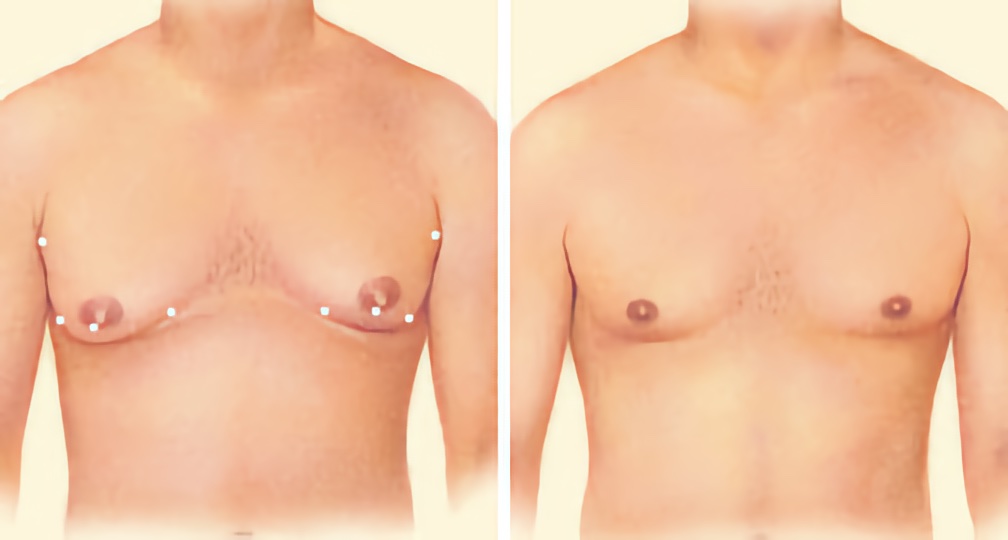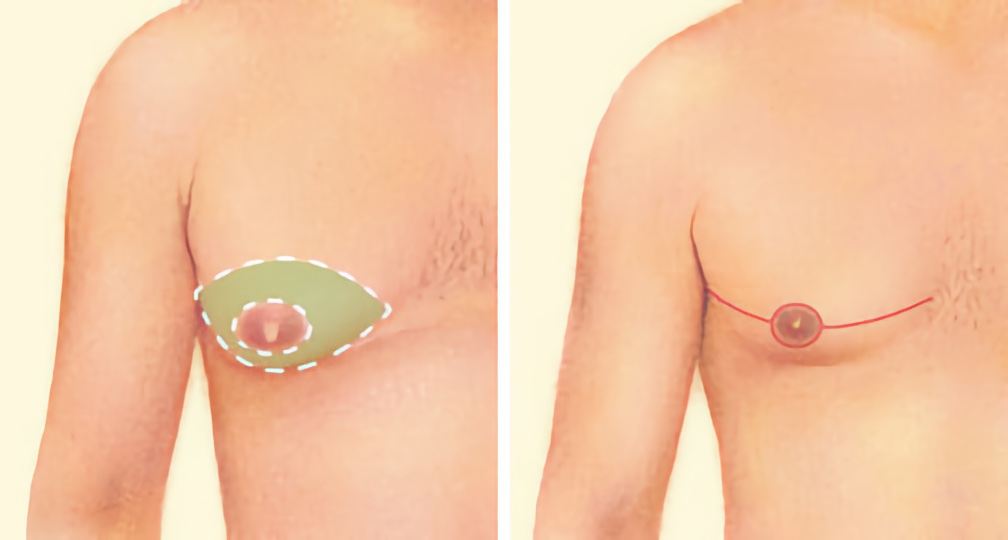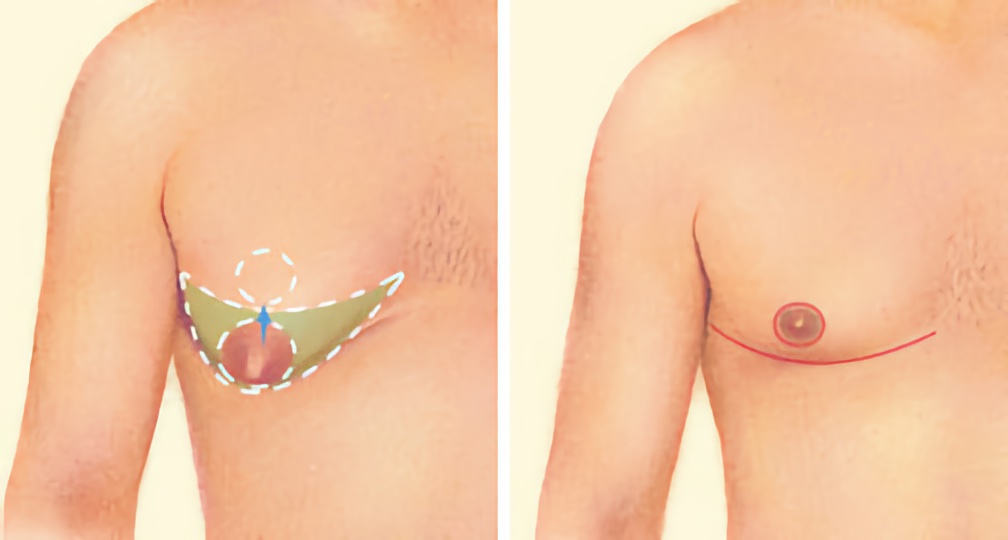Gynecomastia is a condition of overdeveloped or enlarged breasts in men that can occur at any age. The condition can be the result of hormonal changes, heredity, obesity or the use of certain medications.
Gynecomastia is characterized by:
- Excess localized fat
- Excess glandular tissue development
- Sometimes excess breast skin
- Presence unilaterally (one breast) or bilaterally (both breasts)




